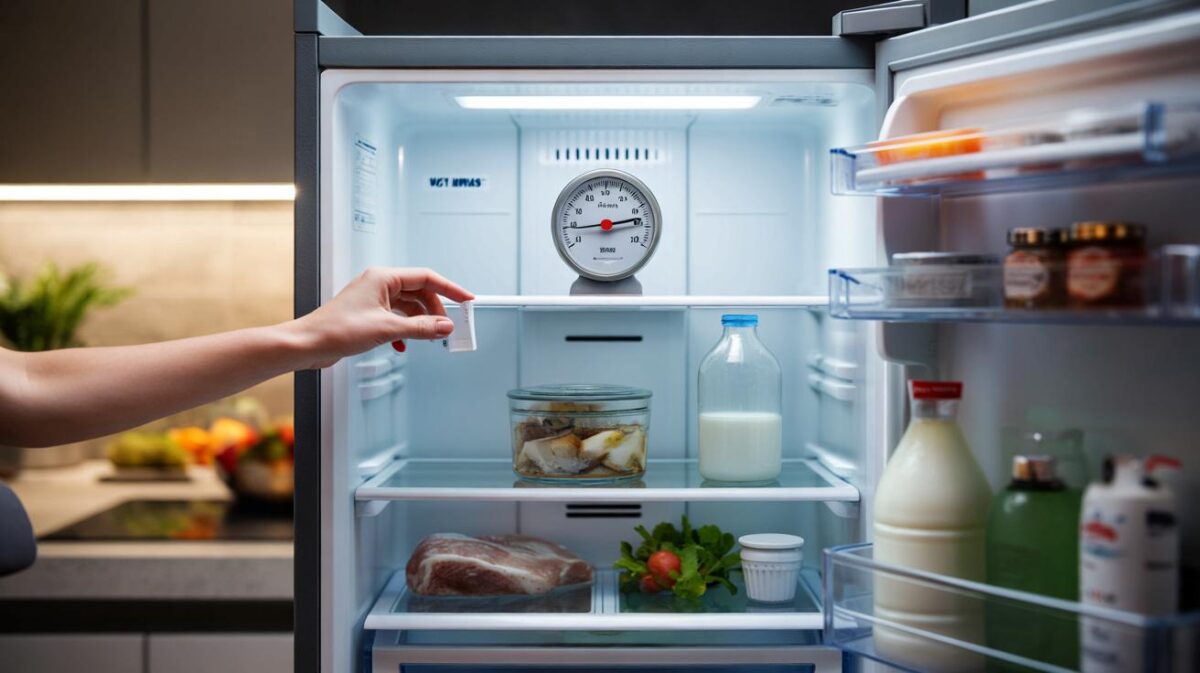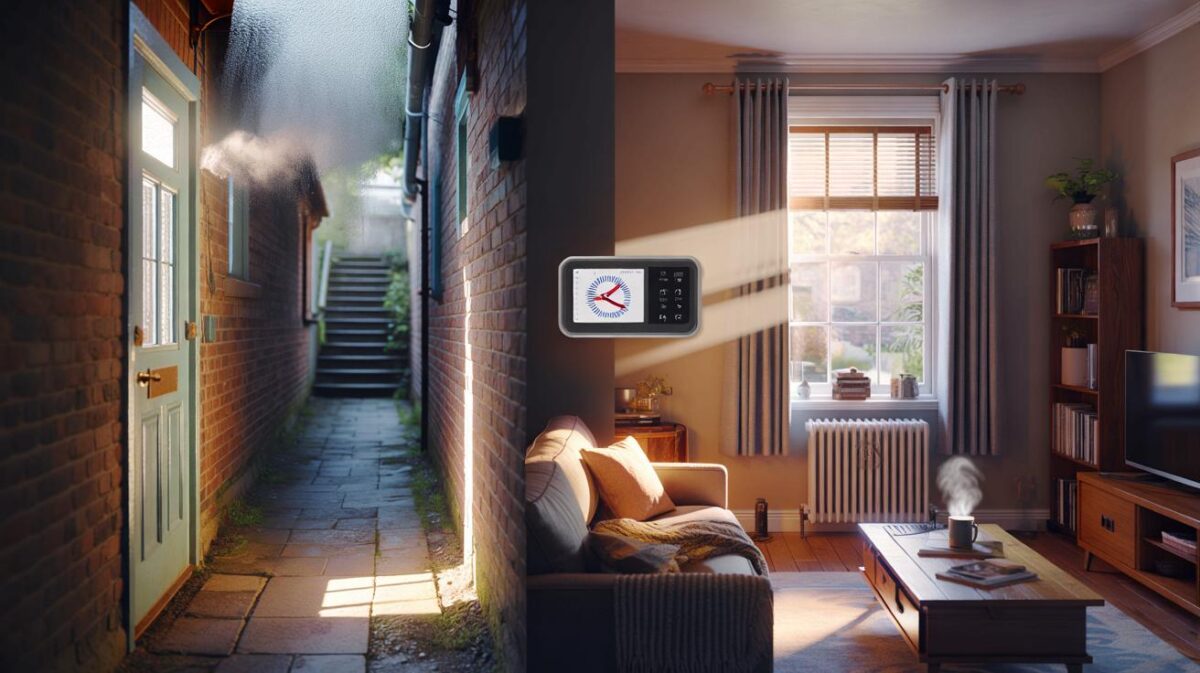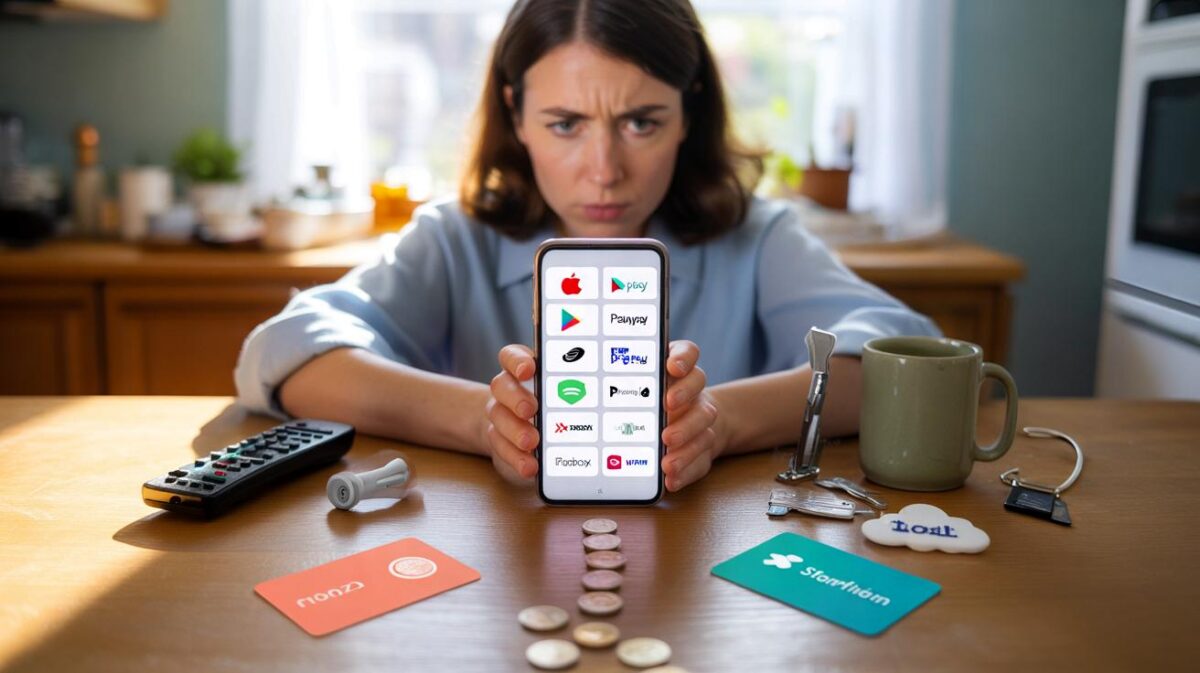So they splash leaves, oceans, and soft words like “conscious” and “eco” across everything from jeans to jet fuel. The result is a fog of good intentions and soft focus — with you, staring at a label, trying to figure out if it’s real or just clever paint.
I was in a high-street store when a shopper asked a sales assistant if a “planet-kind” sweatshirt was actually better or just better-looking. The assistant shrugged in that honest way retail people do when marketing meets reality. We’ve all had that moment when a label whispers virtue and your gut says, wait, show me the numbers. I pulled up the brand’s sustainability page on my phone, scrolling past sunlit factories and smiling pickers until I found the small print. Emissions “intensity” down. Total emissions up. *The sticker said “planet positive” but the math said otherwise.* Prove it.
The red flags hiding in plain sight
Vague adjectives are the first alarm bell. “Green,” “eco-friendly,” “sustainable” — with no evidence attached — mean next to nothing. Real claims link to methods, dates, and independent checks. A second tell is the single-issue halo: a bag trumpeting “recycled lining” while the rest is virgin plastic, or a “low carbon” trainer whose shipping, packaging, and returns are quietly ignored.
Watch for artful framing. “100% carbon neutral” often means heavy offsets against rising pollution, not actual cuts. In the UK, the advertising regulator banned HSBC’s climate ads for cherry-picking tree-planting while glossing over financed emissions. That ruling echoed a broader shift: regulators want whole-footprint honesty, not feel-good slices. When you see a big claim, ask: which part of the iceberg is on display, and what’s under the waterline?
The simplest trick is the switch from totals to ratios. Brands brag about “emissions per product” going down while selling many more products, so the planet still gets more heat. Read it like a bill: absolute emissions matter most, year over year, across Scope 1, 2 and 3. Scope 1 and 2 are the fuel a company burns and the power it buys; Scope 3 is the monster — the supply chain, use, and disposal of products. If a brand won’t publish Scope 3, treat every claim as provisional.
The metrics that actually prove progress
Start with targets, not taglines. Look for near-term, science-based targets validated by the Science Based Targets initiative (SBTi), aligned to 1.5°C. Then check progress: are absolute emissions falling across all scopes, not just intensity metrics? Look for absolute emissions falling year on year. Next, scan their energy mix. Percentage of electricity from renewables should be rising fast, disclosed using market-based accounting, with contracts you can name — PPAs, not just certificates.
Offsets should be a footnote, not the headline. Real decarbonisation shows up as cleaner power, redesigned products, and cleaner logistics, backed by capital expenditure flows. Many credible brands now publish the share of annual capex dedicated to low-carbon projects. That’s where you see intent turn into steel and software. Let’s be honest: nobody does that every day. So bookmark the sustainability page, and check once a quarter the way you check a bank balance.
You want verification, not vibes. Look for third-party assurance of the data (even “limited assurance” beats a glossy PDF), CDP scores in context, and membership in frameworks that demand proof — RE100 for renewables, B Corp for governance standards, FSC or GOTS for materials. Numbers beat adjectives every time.
“If a claim doesn’t link to numbers, it’s marketing, not mitigation.”
- Scopes 1–3 published with at least three years of trend data
- SBTi-validated targets (near-term and net-zero), with annual progress
- Renewable electricity share rising, preferably via PPAs; RE100 membership helps
- Capex and revenue share from low‑carbon products openly reported
- Independent assurance level disclosed; product LCAs or EPDs where relevant
Reading green claims like a pro (without needing a PhD)
When a brand shouts “Made with recycled materials,” go looking for a percentage and a standard: Global Recycled Standard (GRS) beats a leaf icon. “Plastic-free” should specify the product and the packaging, not just the lid. On agriculture claims, FSC or PEFC for wood, Rainforest Alliance or organic certifications where they make sense. On fashion, ask for fiber breakdowns and dye-process details, not just a capsule “conscious” line that sells out on payday.
There’s a trap with “net zero by 2050” banners. Long-dated pledges without 2030 numbers are mood music. A serious pathway shows a steep cut this decade, usually 42–50% by 2030 for the company’s own operations and deep cuts in supply chains. Offsets are the last 5–10%, not the plan. If a brand leans on “nature-based solutions,” check permanence, leakage, and verification. Forests are vital. They’re not your laundry service.
Many shoppers tell me they feel overwhelmed by acronyms and standards. This isn’t a test you pass or fail; it’s a set of quick filters you can learn in a lunch break. And it’s okay to ask a brand, publicly, for the receipts.
Metrics are a bridge between promise and proof. Ask yourself: does this claim cover the whole product life, and is it backed by data I can check? If the answer is yes, great — we need those wins, and we need them fast. If the answer is no, you’ve just saved your attention for a brand doing the hard yards. And maybe nudged the laggard along.
| Point clé | Détail | Intérêt pour le lecteur |
|---|---|---|
| SBTi-validated targets | 1.5°C-aligned near-term targets with annual progress | Separates ambition from wishful thinking |
| Absolute vs intensity | Total emissions falling across Scopes 1–3, not just per unit | Shows real-world impact, not clever ratios |
| Renewables and capex | Rising renewable share, RE100, and capex tilted to low-carbon | Signals investment, not slogans |
FAQ :
- What’s the difference between “carbon neutral” and “net zero”?“Carbon neutral” usually means today’s emissions are offset with credits. “Net zero” means deep cuts across all scopes, with a tiny residual offset at the end; it’s a pathway, not a badge.
- How do I check if a target is real?Look for SBTi validation, then read the progress chart. If totals aren’t dropping, the target is not yet changing reality.
- Are offsets always bad?No. High-quality, verified projects can play a small, last-mile role. They can’t replace cutting emissions at the source.
- What if a small brand can’t afford audits?Transparency still helps. Publish material mix, supplier locations, small pilots with measurable cuts, and a clear plan for the next 12 months.
- What can I check in 30 seconds on my phone?Search: “Brand + sustainability report,” “SBTi,” “Scope 3,” “renewable electricity %.” If you can’t find them fast, that’s a signal.








